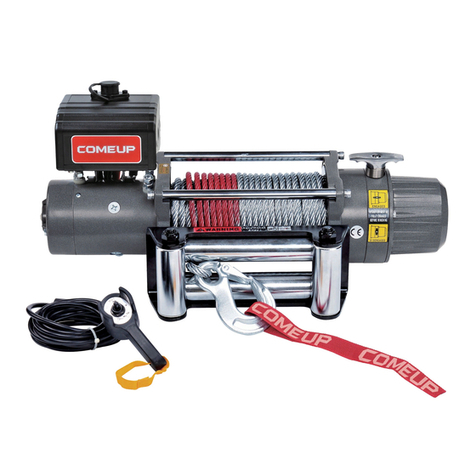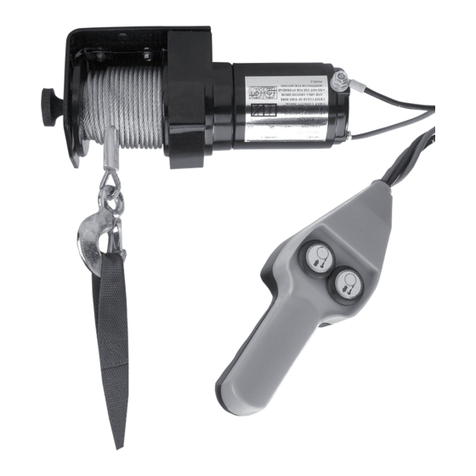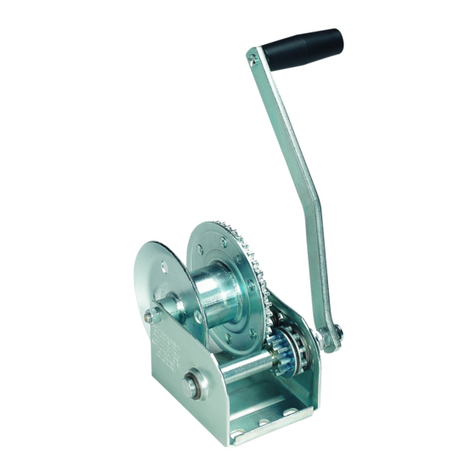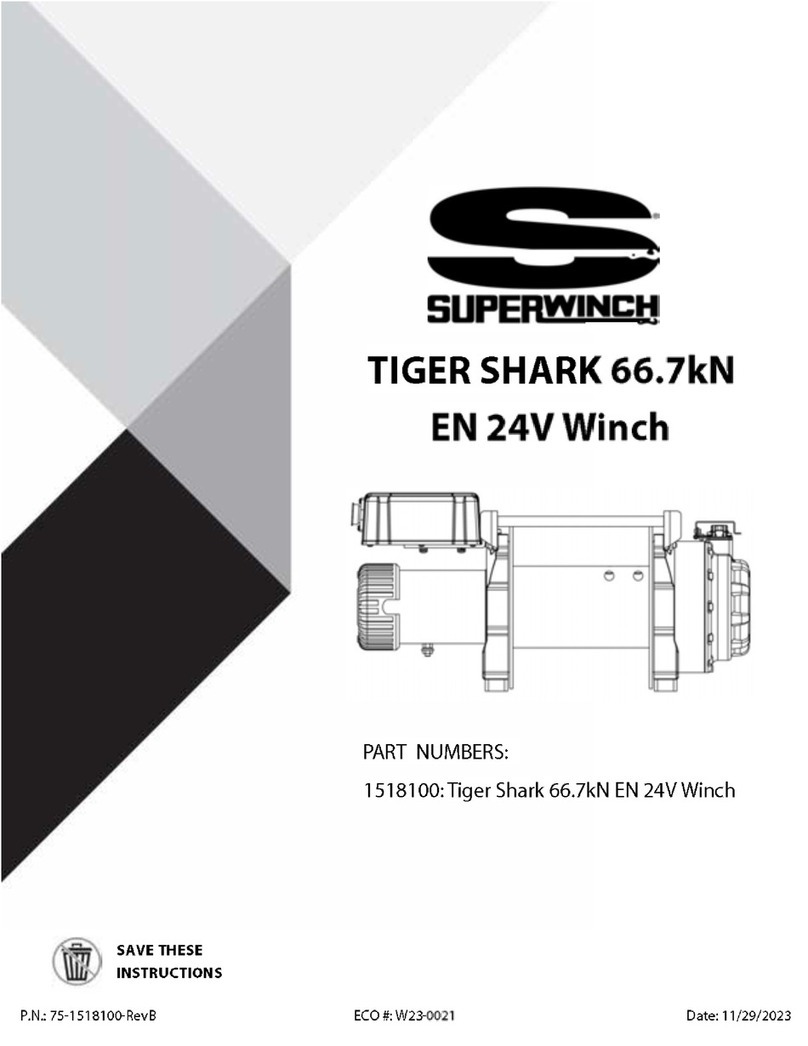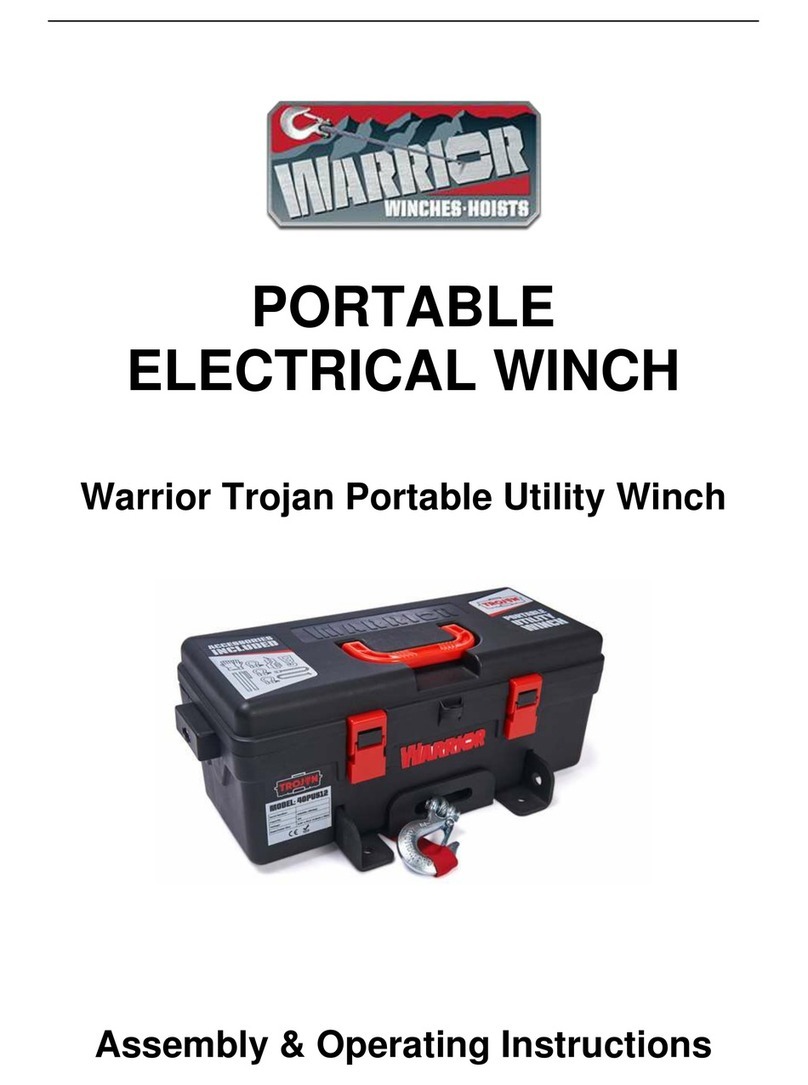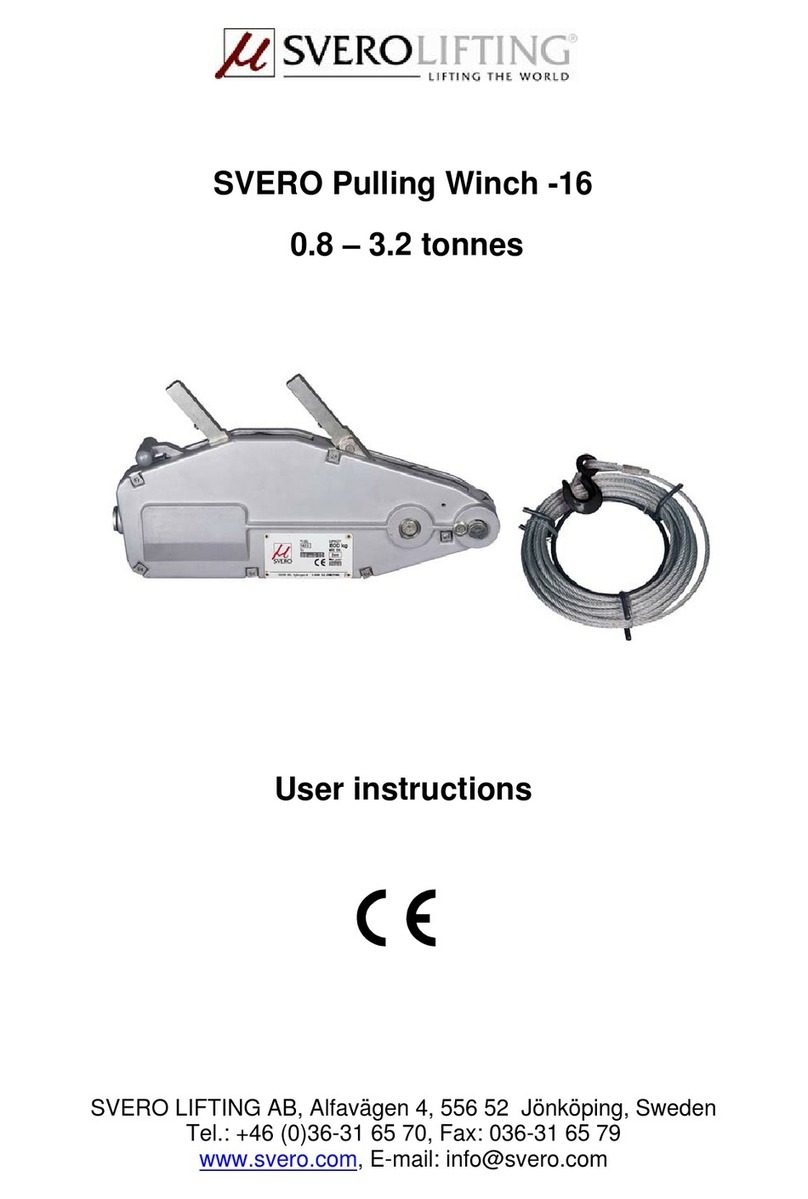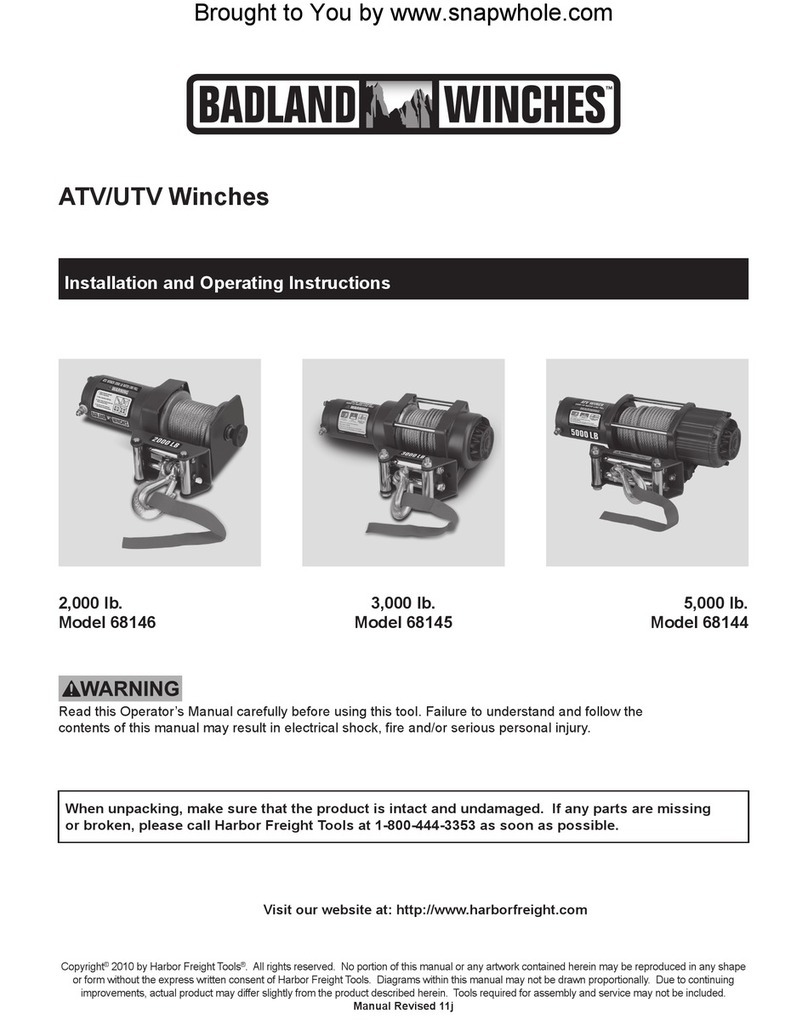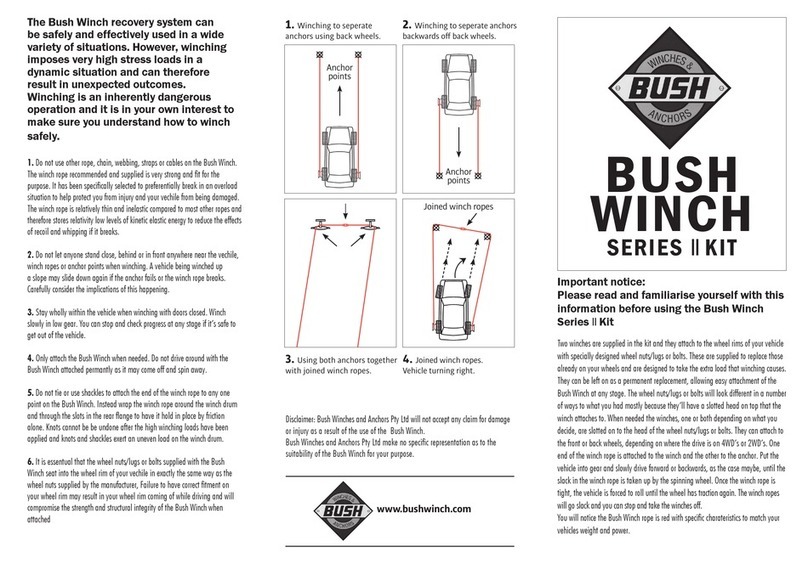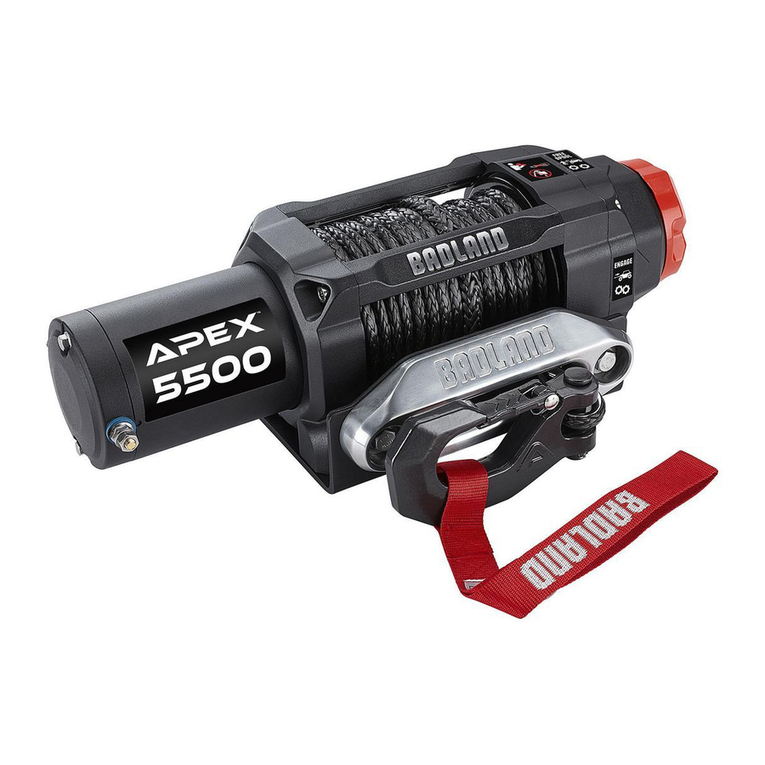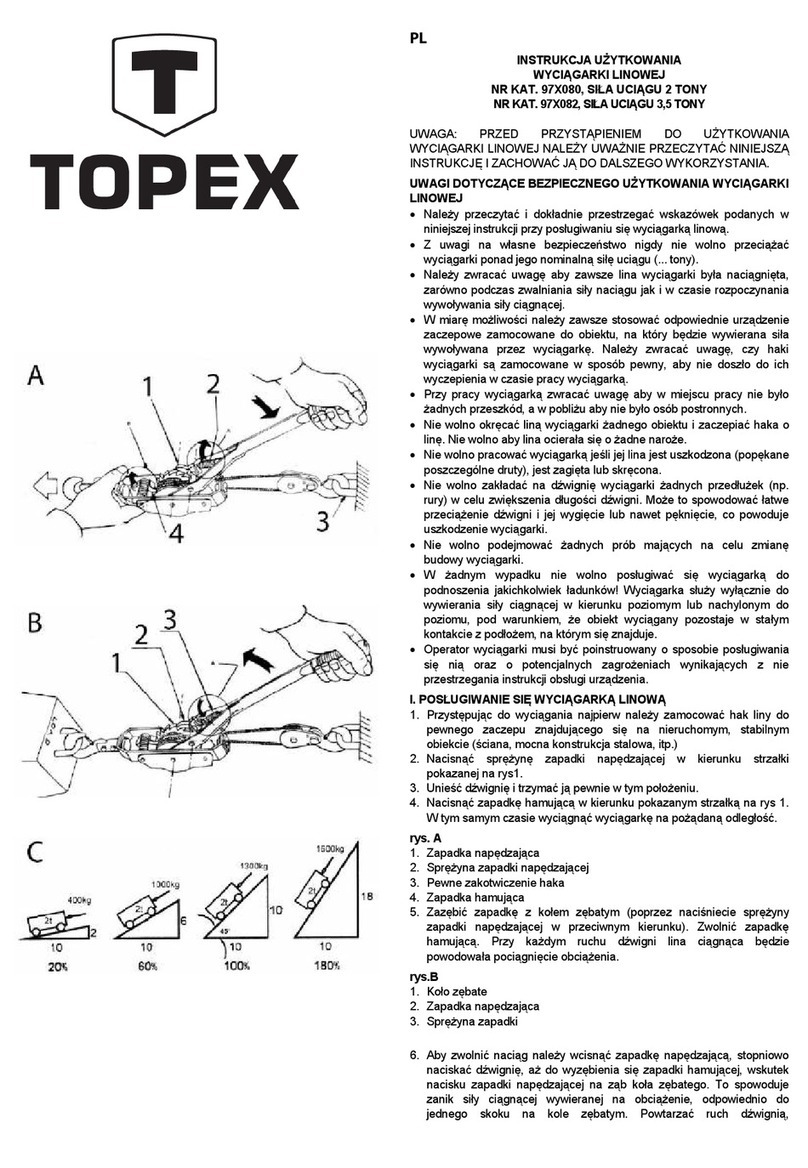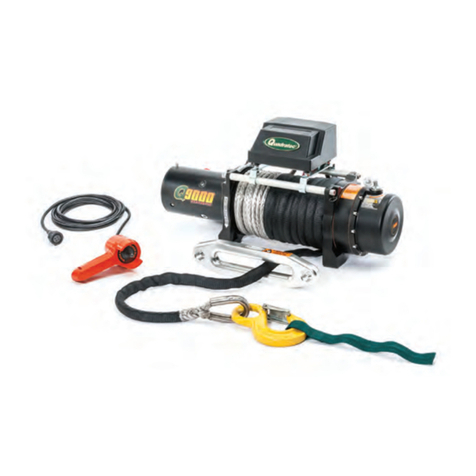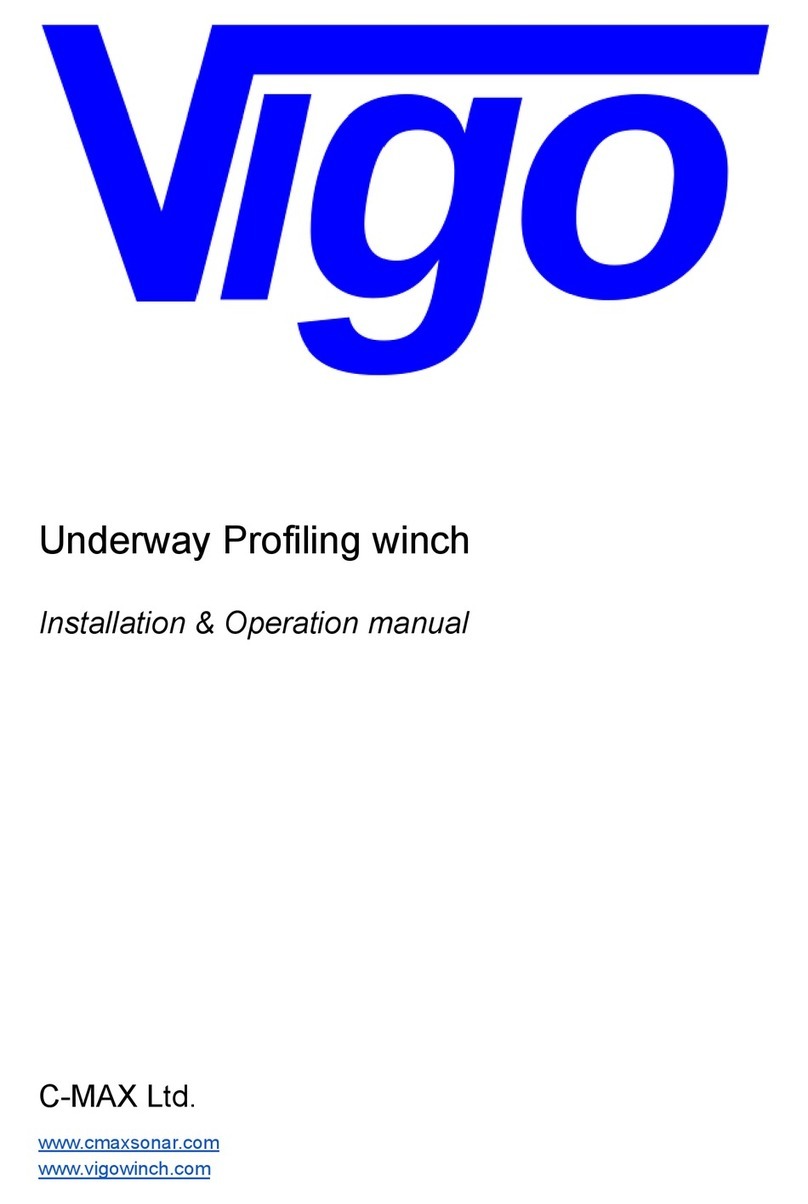3
Contents
1Safety advice.................................................................................................................................................5
1.1 Advice for the use of the wire rope winches ..................................................................................................5
1.2 European regulations.....................................................................................................................................5
1.3 Spare parts....................................................................................................................................................6
2Technical overview........................................................................................................................................7
2.1 Explanation of type designation.....................................................................................................................7
2.2 Technical data of the wire rope winches........................................................................................................7
3Assembly of the wire rope winch ...................................................................................................................8
3.1 Wire rope winch with wall bracket..................................................................................................................8
3.2 Wire rope winch with foot support..................................................................................................................9
4Electrical connections....................................................................................................................................9
4.1 Mains connection.........................................................................................................................................10
4.2 Electric connections for the pendant control................................................................................................10
4.3 Electric limit switch for lifting........................................................................................................................10
4.3.1 Layout..........................................................................................................................................................10
4.3.2 Adjustment of the electric limit switch..........................................................................................................11
4.3.3 Hazardous operations..................................................................................................................................11
5Directions and prohibitions for use...............................................................................................................12
5.1 Directions for use.........................................................................................................................................12
5.2 Prohibitions of use.......................................................................................................................................12
6Maintenance................................................................................................................................................13
6.1 Test and maintenance works.......................................................................................................................13
6.2 Replacement of the wire rope......................................................................................................................14
6.2.1 Replacement of the wire rope at the hook tackle.........................................................................................14
6.2.2 Replacement of the wire rope at the drum...................................................................................................14
7Construction and mode of operation of the DC disk brake ..........................................................................15
7.1 Construction and mode of operation of the DC disk brake ..........................................................................15
7.2 Check of the BFK 457-08 ............................................................................................................................16
7.3 Assembly of the DC disk brake....................................................................................................................16
7.4 Faults on the DC disk brake ........................................................................................................................16
8Lubrication...................................................................................................................................................17
9Measures to be taken at the end of the end of the S.W.P. ..........................................................................18
